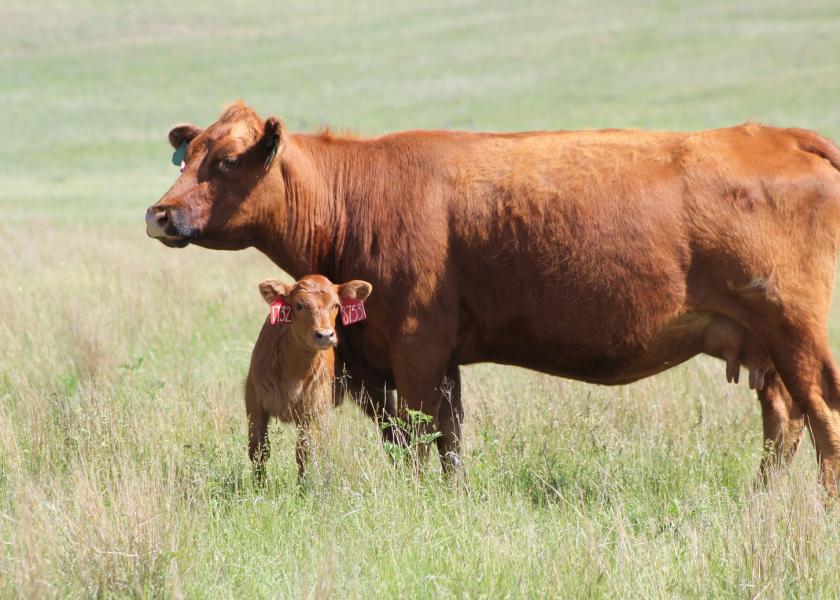Justin Sexten: Simple Technology to Improve Reproductive Success

The number of sensor based technologies available to livestock producers continues to advance. Today there are machines and sensors being used to replicate human observation related to sight, sound and even smell. Employing these senses allows enhanced diagnostics of nearly every aspect of animal health, performance and welfare.
A recent review from Ilan Halachmi and co-workers in the Annual Review of Animal Biosciences discussed the scope of technology available to land-based livestock enterprises. The scope of applications highlighted ranged from a simple camera image to electronic sound and smell analysis. Between these extremes was 3D imaging, accelerometers, GPS, load cells, and several types of boluses.
The characteristics measured and predicted by this technology ranged broadly from feed intake in nearly every production livestock species to a very specific aggressive behavior in swine. The details and the opportunity each technology represented is fodder for future articles. This month will highlight a technology the dairy industry continues to advance that many beef producers may benefit from implementing without the technology.

Regardless of the method used to record calving information I suspect too few producers capture this most important data point. If you think about it, aside from a breeding soundness exam on a potential herd sire there is no other measurement that provides greater insight into potential reproductive success of your cow herd.
The dairy cow proves this point as she represents the greatest challenge to the stockperson. Matching a dairy cow’s nutrition to her milk production demands while ensuring enough nutrients for reproductive success is daunting for even the best nutritionist.
Body condition scoring is such a key management tool in accomplishing this goal dairy researchers to begin using ultrasound as an objective BCS tool as early as the 1970’s according to Ilan and others. As camera technology advanced in the early 2000’s alternatives to ultrasound were evaluated due to time and labor required.
Time and labor continue to drive technology in the dairy industry, from automation in milking and feeding to gathering critical management data. Few if any beef operations could justify the cost or even begin to implement camera technology to automate BCS. One has to ask how the data and resulting decisions from the same measure, at a similar point in production system justifies decades of technological research in one industry while the other sees so little value in its capture.
Dairy operations can capitalize on knowing calving BCS by grouping cows according to condition score and milk production. While increased days open is never the goal, dairies have the “benefit” of directly capturing increased milk production attributed to increased feed to the thin cow groups. While these thin cows may be open longer, the increased milk may partially offset the higher feed cost. Coupled with high cost of developing heifers and the daily demand for cows freshening the dairy also benefits from more flexibility in breeding dates.
Unlike a dairy, little opportunity exists for beef operations to capture the inputs required to increase a thin cow’s calving BCS after calving. Trying to catch up to thin cows may increase milk production and weaning weight slightly, but in many cases the goal of enhanced reproduction is limited due to a restricted breeding season. This is especially true in young cows.
Most will argue weaning age and pregnancy diagnosis limit beef system market opportunities. Yet, the opportunity to manage groups of cows in a beef enterprise may be easier when you remove the need to come to a milking parlor two or three times a day.
The management options are varied. Perhaps it's simply grouping thin cows before and after calving to optimize feed resources. Delay bull turnout or removal to narrow the calving window of these reproductive challenges. Alternatively early wean calves from the thin cows to eliminate the demands of milk production. Or modify the “historical” weaning date to improve the condition of the entire herd.
While driving between pastures to feed hay or waiting on that cow to calve consider the idea the dairy industry is using technology to automate the capture of a data point we often don't see the need to record. Somewhere between the two there is an opportunity.
Justin Sexten is vice president of strategy for Performance Livestock Analytics.







